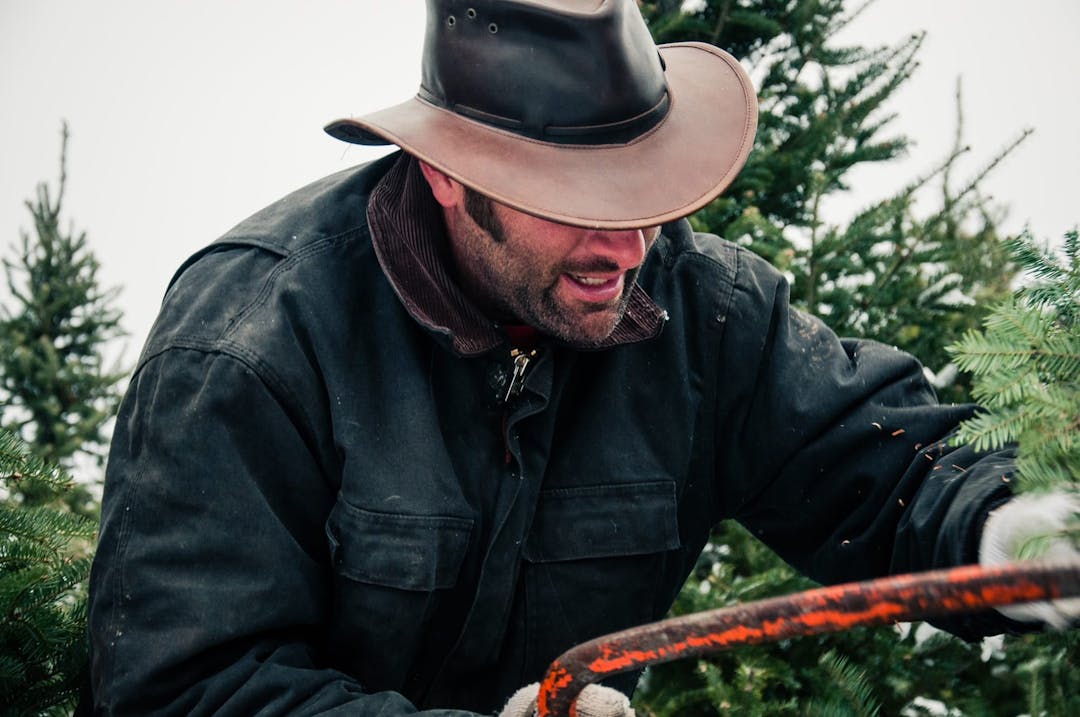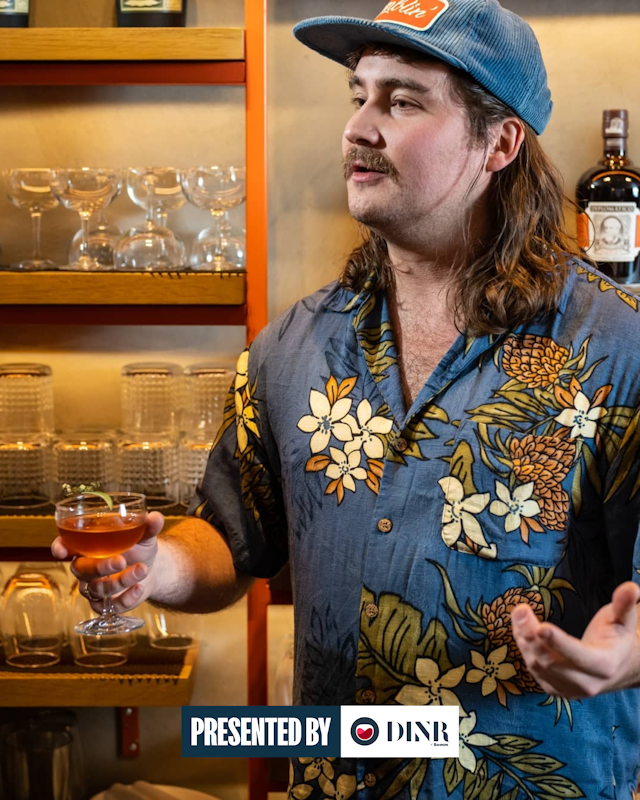Ferme Quinn: Farming DTC Christmas trees on the edges of the city
The Christmas tree industry's experiencing massive changes in supply—we caught up with a farm that's out there growing and chopping to find out how.
 Photograph: Courtesy Ferme Quinn
Photograph: Courtesy Ferme QuinnAs you read this, Phil Quinn’s eponymous farm out in L’Île-Perrot is fresh out of spots for visitors to cut down their own Christmas trees, and they’re close to being sold out—if not sold out already.
“We’ve been way ahead of schedule at this time of year,” Quinn says about sales over the phone.
It seems basic—plant trees and they grow, right?—but it’s a type of ‘crop’ that, like anything else on a farm, requires a forward-looking perspective.
“You have to think 8, 10 years down the line,” Quinn says. “What’s the market going to look like, what do you want to expand into as a business and plant accordingly. By now, we’re planting for the next generation, thinking about how big we want the farm to be.”
“We’re planting around 2,000 and 3,000 trees a year now. We’ve been doing this for so long—take our apple trees that’ll last 40 to 60 years—that we know things need to be done right. It’s costly to start over again, and you can catch yourself off-guard if you planted too many and have excess stock.”
“You have to think 8, 10 years down the line... we’re planting for the next generation, thinking about how big we want the farm to be.”

IN THE THICK(ET) OF IT
The Christmas tree market around Montreal's got a lot of tension to it right now. If you go by Atwater Market for example, they’re still selling batches, but you’ll likely noticed a sharp uptick in prices, and demand seems to only be growing.
We wanted to know what it’s like to farm this particular crop, and full disclosure: When we asked different Christmas tree farmers about whether or not they wanted to speak about their work at this time of year, most said no. "There is so much demand that I just cannot supply. So more publicity would just add to the problem," one told us.
“Since COVID, people have wanted a connection with something real, and they want something that’s more environmentally conscious in their homes,” Quinn explains. “By contrast, fake trees are petroleum-based products made from carbon that’s extracted from the soil, whereas trees are growing from 5 to 10 years, a carbon sink sequestering that carbon from the atmosphere.”
However, he says, since the economic downturn in 2008 and 2009 Quinn points to farms that have gone out of business in the United States. Throw in climate change that's caused past massive fires in places like Oregon and South Carolina which have devastated huge acreages of Christmas trees, and the headcount’s been lowered.
So, demand’s way up while supply's been slashed. As the American dollar’s higher, people have found it cheaper to drive up north to Canada and buy trees by the truckload. Ferme Quinn doesn’t see that as they focus on selling DTC (direct to consumers)—a crucial part of what’s supporting their farm—but there are farmers seeing people coming from the state of New York and the Eastern Seaboard looking to buy in bulk.


ON GROWTH
The self-described ‘co-Farmer-in-Chief’ Phil has run Ferme Quinn alongside his wife since 1982, when it started out growing sweet corn and strawberries.
Over time, Ferme Quinn’s come to be a first name in agrotourism for Montreal: A standby throughout the harsher years of the pandemic, attendance exploded due in part to how the farm’s filled its calendar with different crops and goods spanning from maple in the defrosting winter and asparagus of late sptring to berries and corn in the summer to apples and pumpkins in autumn. That include Christmas trees come winter.
After maximizing their space, they bought the neighbouring farm next door in 2019 that hadn’t seen the land worked since 1971, and which hit its own peak this year. Between the farming, managing visitors, and growth, the farm can see as many as 3,500 people a day over 200 acres in production (plus roughly 75 acres of wetlands and forests).
“Everything’s a learning experience. It’s important to show that we’re real people and working hard at what we do. It’s important to be part of community, especially when things go sideways, helping families like single moms who are finding it tough to make ends meet,” Phil says.
“Farmers have to be optimistic to do what they do. You put a seed in the ground and hope for the best; it’s a beautiful industry to be in, having the possibility of making beautiful and amazing things.”

LESSONS FROM THE LAND
Over the phone, despite the stress that can come from working in agriculture, let alone welcoming thousands of people to the farm, Phil's laughing when he can in the conversation.
“Farmers have to be optimistic to do what they do. You put a seed in the ground and hope for the best; it’s a beautiful industry to be in, having the possibility of making beautiful and amazing things,” Phil says.
“There’s nothing but opportunities out there for the next generation. People are missing that connection that we used to have here in North America, and people who come here from around the world tend to have a closer connection to the environment around them and farms."
"Whenever they comes here, they crave that, but you can’t get your hands dirty with Walmarts and IGAs... it’s important for the next generation of farmers to have a connection to consumers, and to make the business viable and make room for the next generation. Agrotourism opens a door for that.”
As for advice for anyone thinking about getting into agriculture?
“Try to shadow or work under someone who’s successful in the business, anywhere in the world, an go see how people are doing it."
"Take the best of it, and bring it home with you.”





